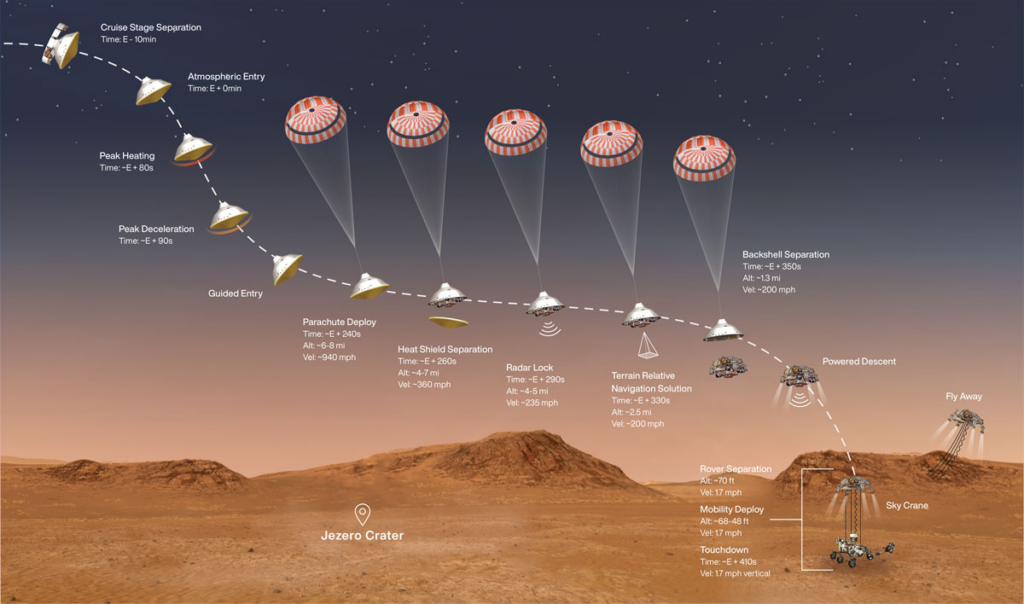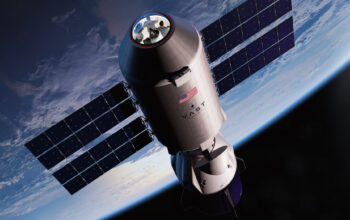Written for and on behalf of Titans Space Industries and Titans Space Society
Lead author: Neal S. Lachman
From the same author:
Table of Contents
Introduction
Currently, chemical rockets are the only means for space travel. As explained in last year's Critical Analysis of Rocket Launch Systems, rockets are the most dangerous method of transportation ever invented. NASA learned the hard way that there are many unknown unknowns, and that with rocketry, considering known unknowns is not enough to prevent disasters.
Due to its violent nature, required by the laws of physics, escaping Earth's thick atmosphere with vertically launched rockets will always remain extremely dangerous – no matter how advanced our technologies, engineering, and materials will be.
As of 2023, only twenty-four astronauts have gone beyond Earth's orbit. NASA's Apollo program (1968-1972) took 24 astronauts to the Moon, twelve of whom walked on the Moon's surface. Numerous space agencies are presently considering human spaceflight, but none, except NASA, have presented plans beyond Earth's orbit. NASA's Artemis 2 mission will be the agency's first crewed mission with four astronauts to the Moon's orbit in May 2024. This will be the first time in more than 50 years that humans will go to the Moon.
Most future missions, whether commercial or from space agencies, are inherently limited in terms of the number of people they can carry on top of their vehicles. Elon Musk's SpaceX is developing a super heavy-lift rocket that may be capable of carrying more than just four or five people. The SpaceX Starship will bring about a revolution in space travel, if it ever succeeds in reaching orbit and beyond.
Millions of people are excited about our future as a space-faring species. Many think that Musk will build a self-sustaining million-person-city on Mars. Regrettably, most people don't realize that even with the Starship, a trip to Mars will take at least six, and most probably, eight to nine months. More importantly, most people aren't aware that they can't just take off to Mars whenever they want, or return any time they want, if ever, if they are lucky enough to survive (the journey to) Mars.
This analysis offers one major conclusion: Starships are not only incredibly dangerous, they are also impractical for the very mission they have been developed for. To be blunt: interplanetary travel and colonizing Mars (let alone terraforming the red planet) will not be be achieved with Starships. Once people realize the special, unique requirements of such gargantuan projects, Elon Musk's promises are quickly revealed as unrealistic.
Another company, Titans Space Industries (TSI), founded by a group of business experts, including yours truly, is taking an entirely different approach to space travel, where chemical rockets aren't part of the equation. TSI's projects include orbital infrastructure, consisting of spaceplanes, spaceships, space stations, and lunar landers, designed to allow efficient, quick, low-cost, and -most importantly- much safer space travel.
Since SpaceX and TSI are the most comparable in terms of human (deep) space travel and colonization plans of other celestial bodies, this analysis is primarily focused on SpaceX, and secondarily on TSI. The result has served as a competitive analysis for TSI to understand opportunities and challenges ahead.
Before proceeding, I'd like to emphasize that this analysis is not to discredit the rocket launch industry; Titans Space Industries (TSI) needs rocket launch companies to thrive so that we can steadily proceed with our projects. TSI will require between 20 and 30 orbital rocket launches from 2025 to 2030, creating a potential $1.5 to $3 billion revenue opportunity for the rocket launch industry. We'll launch some of the initial modules for the Titans LEO Space Station in Earth's orbit with rockets.
This analysis, first and foremost, serves to establish a discussion about the future of rocketry. We shouldn't need Earth-launched chemical rockets for human space travel after the mid-2030s.
Chapter 1: The Tyranny of Starship's Many Potential Points of Failure
This analysis borrows from the analyses done by Common Sense Skeptics (CSS), a reviewer of this document. In one of their analyses, they conclude that the Starship is even more dangerous than the rocket that caused “the largest non-nuclear explosion on record”.
“The largest non-nuclear explosion on record is in fact a rocket. In July of 1969, the Russians were racing the Americans to the moon, and their rocket of choice was called the N1.
All four of the Soviet N1 vehicles exploded at various stages of launch, but it's the second one that's the most infamous. The N1, in its entirety in four stages, contained about 680 tons of kerosene, or RP-1, and 1,780 tons of liquid oxygen (LOX) – according to Wikipedia- when this 30-engine behemoth came crashing back to earth at a 45-degree angle.
The resulting explosion leveled the launch complex through shrapnel 10 kilometers away, and even half an hour later droplets of burning fuel continued to rain down from the sky. Two important things to note about this accident. As violent as this explosion was, it could have been much worse. As not only did 85% of the propellant not initially explode — likely due to the separation of stages and vessels, but the RP-1 kerosene and the LOX did not have a chance to coagulate into a gel, which would have made this disaster a worst-case scenario for destruction.
The kiloton estimates for this explosion ranged from one to over seven, which would have been half of a Hiroshima nuke. Had those chemicals all combined at once into gel, it would have been orders of magnitude more destructive.Comparing the N1 and Starship; what was the largest rocket in the soviet arsenal is overshadowed by the proposed Starship specs, standing at 105 meters high compared to the 118 meters high Starship super heavy combo. These designs are nothing alike, but one major difference between them is that the N1 had eight smaller pressurized fuel vessels in the design in their four stages. Starship has two per stage, for a total of four, and they are massive by any comparison since they hold almost exactly twice the mass of propellants.
Also, where the N1 had complete separation between the RP-1 and the LOX vessels, the Starship has common bulkheads, which will rupture if the ship changes shape in any way. It is far more likely that a Starship explosion would consume all the fuel of each stage at the same time.”
For more than 50 years, the Soviet N1's held the record for the most engines —30 in total— ignited on a single rocket. As stated, all four N1 missions -they weren't tests- failed catastrophically, but last week, on February 9, 2023, 31 of the planned 33 Raptor engines were test-fired on a Starship that lasted less than seven seconds. Space enthusiasts all over the world rejoiced, many claiming that we're entering a new phase of space exploration. Reality is, most people don't remember the N1, and they don't remember the disastrous ramifications of having 30 engines, let alone 33 as planned.
Before this event, on December 15, 2022, Starship conducted a single engine test, after which I made a comment to one of the enthusiastic SpaceX watchers on Twitter, stating, “33 points of failure on the most dangerous mode of transportation ever invented.” CSS replied, “And that's just the primary count. Secondary points (plumbing, controls, etc) are also x33.”
Recently, in preparation for this analysis, I asked CSS to expand on any points of failure they see for Starship. They responded:
We've covered most of them in the videos, but of greatest concerns would be the number of engines and the rat's maze of plumbing associated with them; the use of relatively thin stainless steel that's welded together over the inch-thick CNCed aluminum diamond lattice that gives additional structural support to the panels that are stir-welded into one contiguous tube; the common dome, which we always take a lot of flak for mentioning, but when pressures on either side of that dome can't cancel each other out, the dome will buckle, which will change the shape of the cylinder, and likely cause the dome to fail. If the dome fails, the whole vehicle fails. It's that simple.
Those are the big, obvious concerns. Others would include the heat shielding, the fins, and the giant atrium window they like to have in the CGIs. Until more detailed information about the spacecraft they intend to put into orbit is released, those are the greatest concerns we have at this point.
Casey Handmer, an astrophysicist, was asked on Quora to answer the question, “What are the major causes of rocket failures?” Handmer lists many causes, from faulty software to fuel leak from a faulty valve, and from premature engine cut-off to unknown reasons.
Another answer, from James van Laak, a former Senior Project Manager at NASA, summarizes the problem with rockets succinctly: “Rockets are complex, operate at high stress, and are tightly weight constrained. This naturally leads to small margins and little room of error or under-performance.”
There are many known unknowns that can lead to mission failure, which is why meticulous planning and record-keeping, testing, trialing, and theorizing are part of the rocket design team's job. The most dangerous aspects, however, are the unknown unknowns, the issues that aren't even on our mind, that can wreak havoc and cause human deaths.
The Laws of Physics Don't Agree with Rockets
As I write in my Critical Analysis of Rocket Launch Systems:
Clearly, a rocket launch is a sequence of controlled explosions. That sounds really cool, but what makes rockets awesome, fascinating, and powerful to see in action, also makes them most vulnerable, highly inefficient, and utterly dangerous.
Chemical rockets are inherently risky and dangerous, and while there are many improvements planned, the very violent nature of rockets on Earth is and will always be unavoidable.
All rockets, including the Starship, are at risk due to some well known limitations, the most famous one being “The Tyranny of the Rocket Equation”.
NASA's Space Shuttle flight engineer Don Pettit provides the best summary of this equation, which was first coined in 1903 by Russian scientist Konstantin Tsoilkovsky who applied Newton's Third Law to rockets – a technology that wasn't available in the real world until WW2.
Pettit explains:
Tyranny is a human trait that we sometimes project onto Nature. This projection is a form of rationalization, perhaps a means to cope with matters that we cannot control. Such is the case when we invent machines to free us from the bounds of Earth, affecting our escape into space. If we want to expand into the solar system, this tyranny must somehow be deposed.
Rockets are momentum machines. They spew gas out of a nozzle at high velocity causing the nozzle and the rocket attached to it to move in the opposite direction. Isaac Newton correctly defined the mathematics for this exchange of momentum in 1687. Conservation of momentum applied to a rocket was first done by Russian visionary and scientist Konstantin Tsiolkovsky in 1903. All our rockets are governed by Tsiolkovsky's rocket equation.
The rocket equation contains three variables. Given any two of these, the third becomes cast in stone. Hope, wishing, or tantrums cannot alter this result. Although a momentum balance, these variables can be cast as energies. They are the energy expenditure against gravity (often called delta V or the change in rocket velocity), the energy available in your rocket propellant (often called exhaust velocity or specific impulse), and the propellant mass fraction (how much propellant you need compared to the total rocket mass).
The violent escape from Earth's thick atmosphere -with the help of hundreds of tons of propellant- is a necessity for rockets, since, for the time being, there's no other way to go to space. Space Law blogger Alex Li, summarizes the physics behind it as following:
At its core, rocketry is highly dependent on Newton's three laws of motion. According to Newton's first law, a rocket will not move until acted upon by another force. A propellant can provide this impetus by creating a forward-moving propulsion force called thrust. Thrust is generated by the propellant in line with Newton's third law by, depending on the type of rocket engine, some form of reaction that causes mass to be expelled backward through a rocket's nozzle. How fast this rocket travels will depend on, as described by Newton's second law, the magnitude of the thrust created.
The laws of physics, along with many potential points of failure (human, technical, or material) make rocketry incredibly susceptible to catastrophe. No amount of risk analysis will ever be able to accurately predict the probable number of rocket accidents, mainly due to the unknown unknowns. Harry W. Jones writes in the introduction of his research paper for NASA Ames Research Center:
Before Challenger, management thought that the chance of an accident was 1 in 100,000. Afterwards, Probabilistic Risk Analysis (PRA) found a roughly 1 in 100 chance of a Shuttle failure. The number of planned Shuttle flights was greatly reduced. Attempts were made to strengthen the NASA safety culture, but the Columbia tragedy, due to recurring but neglected ice damage to the heat shields, was again attributed to poor safety culture and the normalization of deviance. The second tragedy again confirmed the Shuttle's roughly 1 in 100 risk and the Shuttle program was ultimately terminated. Later launch designs reverted to the safer Apollo configuration, with a hardened capsule, launch abort escape, and the crew placed above the rocket tanks and engine. The ultimate cause of the Challenger tragedy was neglect of risk in Shuttle design.
As if things weren't bad enough in the case of relatively small vehicles that were carrying a small number of humans, the issue of risking the lives of 50 or -as Elon Musk plans for his Starships- 100 space travelers aboard potentially the world's most dangerous vehicle, will become reason for project delays, and even cancellations of many ambitious space programs when just one accident will happen, and happen it will.
Human-Rating Standards
Before any spacecraft can carry humans on board, they need to go through a rigorous certification process. As per Wikipedia, for commercial spacecraft, “NASA Commercial Crew Program human-rating standards require that the probability of a loss on ascent does not exceed 1 in 500, and that the probability of a loss on descent did not exceed 1 in 500. The overall mission loss risk, which includes vehicle risk from micrometeorites and orbital debris while in orbit for up to 210 days, is required to be no more than 1 in 270. Maximum sustained acceleration is limited to 3g.”
Chapter 3, Technical Requirements for Human Rating, of NASA's Procedure Requirements concerns the launch abort requirements, which is —as of yet— completely lacking in the Starship design. Critics are wondering how and when Starship would get a human rating approval from NASA.
Concerning Musk's design decision for SpaceX vehicles, CSS provides us an outstanding analysis of the (lack of an) abort and escape system, as well as the explosive risks:
… All current human rated space vehicles have the ability to rip the humans aboard away from a catastrophic failure – most of them using a tractor rocket mounted at the nose of the vehicle. That rocket is then discarded in space once the crew are safely through the atmosphere.
Crew dragon, which Musk delivered five years late, does not use such a system; it instead uses rockets built into the walls of the manned capsule, which means the astronauts are sitting on this potential bomb the entire time they're in space.
The one demonstration they conducted before setting up the demo mission with Bob [Behnken] and Doug [Hurley] was preceded by a SpaceX test on a returning capsule that accidentally blasted it into dust.
Back in September of 2019, Scott Manley tweeted Elon Musk, and asked him about the possibility of having a pad abort system, to which Musk replied they don't have this system, but maybe they should think about it. In December of 2019, Everyday Astronaut did an episode about how SpaceX was not developing the system, and still to date no such system has been announced, which pretty much means nobody is setting foot inside a Starship – and that includes their ridiculous point-to-point travel proposal that we cut to ribbons in episode 8.
Of course, everything we've discussed so far assumes SpaceX can get one of these vehicles into orbit and land it again safely — something that recent launches have yet to prove… Here are some key takeaways that should demonstrate just how far Musk has yet to go.
Forget the fact that no one has any clue what the inside of this vehicle is going to look like, and SpaceX has shared absolutely no details in that regard. Instead, let's break down how this latest craft exploded where obvious structural weaknesses exposed themselves during the flip maneuver on landing.
Although three engines fired up, two of them had shut down again before landing, and one of those had ruptured a methane line causing orange fire to wash up the vehicle as it landed. When it landed, the vehicle bounced off the ground because the landing legs SpaceX installed are ridiculously useless. In fact, three of them were swinging in the wind as it landed, and came to rest with a leaning angle. That fire continued in the skirt, eventually erupting out the side of the craft and launching it a second time.
The first indication this was going to end poorly is a deformation in the nose cone… as the bottom portion of the rocket was forced upwards from the explosion. Then the bottom portion of the craft tore apart like paper as the methane tank above it ruptured —except that's not the methane tank. That's the LOX tank; the methane tank is supposed to be the higher tank by all accounts, and LOX doesn't explode or burn on its own, which means the single dome separating the locks from the methane had to have been breached on landing —exactly like we said it would, way back in episode 1. The resulting explosion tossed this 50 meter tall vehicle like a toy.
Probability of Rocket Failure
While certain errors can be smoothed out, and certain materials can be replaced after analysis, review, and evaluations, certain design issues are highly unlikely to change without a complete redesign/overhaul. This puts space travelers at high risk.
The safest rocket in history was the Delta II with a 98% mission success rate. NASA's own Space Shuttle had a 98.5 percent mission success rate with a 99.3 launch success rate; one shuttle exploded on reentry.
Let's suppose the Starship miraculously gets the human-rated certification, we'll be lucky if the Starship's failure rate will be below two percent. We have to imagine the hypothetical situation of a Starship failure with people on board – no matter the number of people, 100, 50, or just 2, and it doesn't matter whether that occurs during the first or 100th mission or during launch, a journey, or landing, it will force the entire crewed space travel industry to a grinding halt. How many rocket launch companies will survive such uncertain times?
When the Challenger disaster happened on January 28, 1986, the space shuttle program was shut down for almost three years. Its track-record of nine successful prior missions didn't matter anymore at that point.
The combination of known unknowns, as much as a risk analysis allows, with the unknown unknowns caused by who-knows-how-many additional potential points of failures (e.g. viewing windows, belly-flop maneuvers for landing) of a Starship, will forever doom chemical rockets to the realm of highly unreliable and utterly unsafe vehicles – especially for humans.
Space Shuttle Flight Engineer, Don Pettit, cited above, stated in the same essay:
A veteran astronaut who has been to the Moon once told me, “Sitting on top of a rocket is like sitting on top of a Molotov cocktail”. I took his comment to heart by first weighing a bottle of wine, emptying the bottle, and weighing it again. Simple engineering analysis allowed me to estimate and compensate for the density difference between wine and gasoline (which, for this particular vintage, I am sure was not much different). A Molotov cocktail was measured to be 52% propellant. So sitting on top of a rocket is more dangerous than sitting on a bottle of gasoline!
Space travel beyond Earth's orbit for the masses, with the help of a chemical rocket like the Starship, will remain a fantasy for many years to come, most likely forever.
The company I represent as the Principal Founder and Founding CEO, TSI, offers two alternative vehicles for quick, efficient, and -most importantly- ultra-safe (deep) long distance space travel as essential parts of its projects. The first is a nuclear propelled spaceship, launching from Earth's orbit (not surface), which will be operational by 2027-2028, and the second is a sophisticated orbital launched spaceship. In both cases, there is no tyranny of the rocket equation that forces accepting risking human lives atop an explosive cylindrical stainless steel skyscraper.
Furthermore, while Musk is focused on Mars, TSI is focused on the Moon. This analysis mainly concerns the SpaceX Mars mission, while our newsletters detail TSI's methods for space transport and Moon colonization.
Interplanetary travel for the masses, i.e. on a large scale, with the help of a chemical rocket like Starship, will remain a fantasy for many years to come, most likely forever. Beyond the above stated safety concerns in terms of Starship rocket design, there are several major cumbersome processes and phases in the stages after launch.
As part of the next two chapters, I've split two categories: Traveling to Mars, and Surviving on Mars.
The travel part concerns everything required for the journey —orbital refilling, the journey, reaching Mars. The living part includes risks of surviving, and living and working on Mars. Any part of each of these stages can fail, which will doom the rest of the mission.
Chapter 2: Traveling to Mars - With a Death Wish
There's a rugged romantic notion of visiting and exploring Mars, we've seen movies like Total Recall, series like Mars or The Expanse, and documentaries like Passage to Mars. It seems like the most adventurous place to be; what else can be more exciting than Mars? Little do most people realize what an unforgiving, distant, and unwelcoming hell hole Mars is.
Mars romanticists argue that as a human species, we are predisposed to explore. That's entirely true, but human exploration has been limited to planet Earth. The Apollo missions weren't primarily for scientific and exploration purposes. It was basically a Cold War race with the Russians to show who has superpower capabilities in terms of technology and mastery of the skies.
Mars is at least 35 million miles (56 million kilometers) away from Earth. Other than for scientific research and (deep space) exploration purposes, there are no justifiable reasons to visit Mars, not even for space tourism or to mine the planet for its resources. Less so do we have any sane rationale to build a city on Mars. It's too far to make sense for industrialization (e.g. to take our heavy industry off-world). We don't need to mine it, we don't need Mars for wealth creation.
Why would anyone (other than the odd suicidal) space tourist want to risk losing their life during an utterly dangerous and physically and mentally draining journey on a Starship that has too many potential points of failure to count?
Life on Mars is going to get lonely, depressing, and messed up real fast. That's why TSI is focusing on the Moon. Humans have been there many times with the Apollo missions, it's just three days travel away (and with nuclear rockets it will be a matter of hours), and there's near-instant communications. We can build robotic, autonomous, or remote-controlled projects on the Moon, and with the Titans Space Transport system there will be a virtually unlimited supply of food, water, drinks, materials, machines, and other cargo. If someone gets sick, a return trip can be arranged within a matter of hours. TSI's projects concern the most important space industrialization projects ever, based on real possibilities and not on some space cowboy adventure wishful thinking. More about that in the Titans newsletters.
When people start understanding what the gargantuan risks and tasks are of attempting to go to Mars, let alone starting the journey, they will hopefully start questioning fantastic claims made by Elon Musk and his ilk.
Musk will own your life for at least two years, and the decision of your eventual return to Earth (if ever) will be at the mercy of corporate dealings and quarterly stock performances, or on a first-come first serve basis. Or will your return be decided by means of a lottery?
This chapter is meant to dispel the myth of a successful, adventurous, amazing Martian lifestyle.
The Hohmann Transfer Window
The most efficient way for a chemical rocket like Starship to reach Mars will be to utilize the Hohmann Transfer window, which occurs every 26 months (when Mars orbit aligns closest to Earth's orbit), taking approximately nine months to complete. If Musk want's Starships to get there in six months, as they claim, they need more fuel.
Anyone thinking that Mars is just a SpaceX Mars Travel Agency ticket away, and that they can hop on a Starship next week, doesn't know the basics. Any given number of Sharships have to launch in less than one month when the Hohmann Transfer Window's comes about. If this one-month window passes, Musk's circus will have to wait another 26 months for the opportunity to die on (the way to) Mars.
Starship Orbital Refilling Fantasy
The Tyranny of the Rocket Equation, mentioned in Chapter 1, also renders rockets as the most inefficient mode of transportation. Don Pettit compares rocket mass fractions to those of other vehicles. He lists the approximate numbers for propellant (or fuel when air is used as the oxidizer) to illustrate the general categories of mass fractions:
Vehicle | Percent Propellant (fuel) |
Large Ship | 3 |
Pickup Truck | 3 |
Car | 4 |
Locomotive | 7 |
Fighter Jet | 30 |
Cargo Jet | 40 |
Rocket | 85 |
In other words, on average, a rocket, including Starship, will consist of up to 85% propellant, and only 15% structure and payload. It's also understood that about the same percentage of that propellant will be used to escape Earth's thick atmosphere. That is why, in order to start their journey to Mars, Starships will need to have their tanks refilled on-orbit.
On the Mars & Beyond section of the SpaceX website, they write about on-orbit refilling:
Starship leverages tanker vehicles (essentially the Starship spacecraft minus the windows) to refill the Starship spacecraft in low-Earth orbit prior to departing for Mars. Refilling on-orbit enables the transport of up to 100 tons all the way to Mars. And if the tanker ship has high reuse capability, the primary cost is that of the propellant, and the cost of oxygen and methane is extremely low.
This vision is not grounded in reality; orbital refilling is most likely never going to happen at the scale and frequency as Elon Musk envisions and requires for Starships.
Each future Starship taking off from Earth's surface will consist of two stages, the first stage is the so-called reusable Super Heavy booster at the bottom half, and the Starship itself, on top, is stage two. According to the latest iteration as per SpaceX, Starship will stand 120 meters (394 ft) tall, almost equally split between the two stages. I'll leave the in-depth explanation of Starship design shortcomings to the likes of CSS (see the Starship and Mars analyses series on their YouTube channel).
SpaceX is developing two versions of Starship. One for humans and cargo transport, the second for propellant cargo. As Pettit explains in the above cited essay, most of a rocket's fuel will be spent in the effort to leave Earth. As such, since most of the on-board propellant of the Super Heavy booster will be expended in the effort to escape Earth's thick atmosphere, each Starship's tanks will need to be filled up with propellant (liquid methane [CH4] as fuel and liquid oxygen [LOX] as oxidizer) to before starting the journey to the red planet. This process is known as, orbital refilling/refueling or on-orbit refilling.
I believe small or even medium scale orbital refueling for chemical rockets and spacecraft (such as satellites), as Orbit Fab intends, or at the Titans OrbitalPort Space Station, will be possible later this decade. In fact, it were the Russians who invented a refueling mechanism for their MIR station. The ISS gets refueled every few weeks. However, compared to the small amount of fuel, anything for a huge rocket would be a Herculean task. Refilling hundreds tons of fuel per Starship may be one of the rockets most important bottlenecks at the start of its journey, and they add unknown (amounts of) points of failure for Elon Musk's deep space projects.
The dangers start at the depot on Earth. CSS explains (Starship: Episode 5) the dangers of the huge amounts of fuel needed for orbital refilling – per Starship.
The Starship carries 1,200 tons of propellant. the Super Heavy carries another 3,400 tons. A tanker would have another 100 tons in the payload compartment, but we'll run this as if it's a crewed mission and then we're going to compare the results against the nuclear bomb that took out Hiroshima. 4,600 tons of propellant is 4.6 million kilos. According to epa.gov, 4.6 million kilos of methane contains 255 billion BTUs of energy. 255 billion BTUs equates to 64 kilotons of TNT, and the nuclear bomb that wiped Hiroshima off the map was a 15 kiloton device.
So Super Heavy fully loaded with the starship is equal in potential energy to about four Hiroshimas… with rockets it's never if one of them is going to blow up it's a matter of when.
One commenter's attempts to refute this and some other claims made in the episode resulted in the following answer from CSS:
You SHOULD have began at the episode called Nuclear Concerns, because we address quite a lot of these exact same, incorrect, types of statements. Starting with the comparison of SS to N1. N1-5L is an historical precedent for the type of outcome for an on-the-pad explosion with half the propellant load.
Estimates of 1-7 kilotons with only 15% of propellants detonated. We'll stand by our numbers until we are proven right or wrong when StarShip explodes on the pad, especially given the effects of the Beirut explosion. We won't have to wait long. First orbital attempt, most likely.
Your assessment of SS not requiring SH for trips over 10,000km is speculation, not fact.
Your fuel costs argument is incoherent, and is worded against your attempted point.
The spacesuit argument is dismissed. Ordinary people will not be able to handle the forces without a flight suit, and containing body fluids will be key in this system incurring weightlessness. Covered in Episode 8 PTP. If this is an argument about the pax capacity of the CGI ship, take it up with Shotwell. We used her numbers.
Your fuel transfer paradigm doesn't exist, so this is speculation.
StarShips headed to Mars are single-purpose vessels, not reusable. To get the next crew to Mars, you need another ship. We differentiate between tankers and StarShips. You apparently didn't.
Sloshing the fuel between vehicles in a tail-to-tail configuration was dismissed as unworkable already. The CGI examples they use now are side-by-side, connected at the midpoint. But, please, by all means, demonstrate how that would work by reducing velocity. Propellant boil-off is of little consequence if you can't transfer it in the first place. But, yes, that's an additional factor to consider.
Many arm-chair space experts would deem people like me as Space Luddites, as if I am an opponent of development in space. On the contrary, I believe very much in the colonization, commercialization, and industrialization of Space, especially Earth's Moon, but we have to keep things realistic. It's of no use to try inventing Star Trek or Star Wars technology – we aren't living in movies. We can't travel at light-speed, we can't travel to Mars in a week, or visit the Sun. Heck, we can't even launch rockets without scrubbing launches, and even outright failing (exploding) now and then.
As explained before, orbital refilling at a large scale will most likely remain another major fantasy.
That doesn't stop people from fantasizing. The delusion with orbital refilling is so big nowadays that some (including NASA) are advocating for smaller rockets, which would rendezvous with an orbital propellant depot, fill up the tanks, and then fly off/cruise to deep space. The premise of the proposal, at first, seems to make sense, were it not for the immense dangers of rockets exploding above our heads every now and then during a risky multi-hour refilling event. As explained in Chapter 1, we have to move away from or at least drastically reduce utilizing chemical rockets.
Musk doesn't disagree with the premise either; SpaceX got some goodies from NASA to figure it out. Nevertheless, in the real world, Starships are not shrinking in size on the design table. Starship is indeed the largest rocket ever designed, and as you may gather, it's a curse rather than a blessing. Starships need to refuel on-orbit in order to speed up on departure and to slow down upon arrival.
Small scale orbital refueling aside, nobody has proven it on a larger scale, and as of yet, we don't have the technology to store and transfer fuel from one rocket/vehicle/depot to another in LEO. To reiterate, it's the huge scale, gigantic quantities, and frequency, not the concept of orbital refueling itself that is going to cause delays, disasters, or deaths. Remember, all this on-orbit activity will play out in Earth's Low-Earth Orbit, most likely between 100 and 200 kilometer altitude. Accidents that may result in explosions will accelerate the Kessler Syndrome, which is disastrous for LEO activity.
SpaceX presented an aft-to-aft refueling concept, which CSS analyzed to death – literally. Not long after CSS published their analysis of this aft-to-aft paradigm, it was announced that SpaceX will not pursue aft-to-aft and instead go for a side-by-side refilling process. Check out that episode for detailed analysis and information on orbital refilling.
The fastest cars in the world are expected to achieve around 498 km/h (~310 mph). That's a fraction of the orbital speed something up there is traveling. Orbital velocity in Low-Earth Orbit is between 6.9–7.8 km/s (24,840–28,080 km/h or 14,430–17,450 mph). This orbital velocity is not only incredibly fast, it's also dangerous for maneuvering.
As CSS posits:
If the vehicle slows down significantly, its orbit will degrade, just as if it speeds up, it will climb further away from Earth into a higher orbit until it leaves LEO. How do they expect to slam on the brakes and maintain their velocity?
This would have been a significant dilemma for pairing Starships aft-to-aft (canceled now), and is still an orbital mechanics/astrodynamics hurdle for Starships side-to-side refueling. Due to the incredible velocity, and due to this all being in the near-vacuum of space, it's nothing compared to aerial/in-flight refilling where aircraft can use the laws of aerodynamics to their benefit.
In space, when two objects (e.g. Starships) are positioned side to side, it will look like there's no movement – they will appear as if they're stationary. Pairing/coupling these objects should be relatively straight-forward with the help of thrusters. However, the process of transferring tons of propellant from a tanker to a Starship introduces many dangers with many additional potential points of failure.
Since orbital refilling would occur at near-zero gravity, liquid fuel in the Starship tanker will float like everything operating in micro-gravity; it won't be simply draining into the receiving Starship. There will have to be some kind of (compressive) mechanism to move the fuel downward – a pump may not be fully efficient in this scenario. Keeping two objects paired/coupled in orbit, pumping/transferring fuel, and all the necessary processes in between, require mechanisms that will add weight and numerous other complications (again, additional potential points of failure) to the Starships, and it may or may not work. Mind you, every single Starship will need to be paired 4, 5, 6 or even more times to have enough propellant for its eight to nine-month journey. Multiply this horror scenario unfolding above our heads 100, or even 1,000 times, as Musk envisions an armada of Starships taking off for Mars, Battlestar Galactica style, and you may realize why no sane government will allow this to happen over their land; no responsible regulator will issue permits for this dangerous spectacle.
Last but not least, let's suppose, in the unlikely event that orbital refilling issues will be resolved, some irresponsible bunch of politicians arrange permits, and numerous Starships get on its way to Mars as part of a Battlestar Galactica-style armada. A whole new level of practical problems arrive: the fuel needs to be in liquefied state during the entire (eight to) nine month journey to Mars. It's a great mystery how this cryogenic cooling issue will be resolved in Starship as there have been no cooling mechanisms —including something as “relatively simple” as a sunshade— presented as a viable solution. Even then, who guarantees that Musk's eventual cooling system will work?
We were considering analyzing in-space (deep space) refilling options beyond orbital refilling, but that potential solution is so far out, it would be a waste of time to even consider. Unless on-orbit refilling is proven as a safe, efficient, reliable option, deep space refilling will be a pipe dream.
The Journey to Mars: Nine Months of Constant Terror
As CSS breaks down the specs and numbers in this Starship Rocket Design episode, it seems highly unlikely that Elon Musk's current stainless steel skyscraper can deliver on its promises to fit 100 people comfortably – worse, there's insufficient room to store the necessary quantities of water and food for the duration of the journey. It won't be fun to realize you have risked life and limbs, radiation, and refillings to now risk dying from starvation or thirst. No, you won't be able to land a shuttle from the Starship onto a passing comet to mine for water ice The Ark episode 4-style, or anything else for that matter. That's pure fantasy.
You will live for the entire duration journey in a pressurized environment, not too dissimilar to being high up in an airplane in flight. You can't bring too much moisturizer, because that will add weight to the Starship. You can't bring along any pets or any other living creature (other than other humans) — they won't survive the first few days in near-zero gravity en route to Mars. You can't bring more than one or a few physical books, you can't bring more than just a few pairs of clothes, caps, or accessories.
For more than two years, you won't feel Earth's gravity, or direct sunlight on your skin, or breathe and taste fresh air. You won't get specialist health care and medicine if you develop a disease or sickness. There is no constant communications with loved ones or colleagues. There are no rescue missions, there's no AAA, there are no gig workers to do odd jobs for you. Heck, there's no mini-market, let alone a supermarket. Most people shudder at the idea of living and working on Antarctica for more than a few days, even though the scientists there are considered really fun people. Mars is a million -if not a few billion- times worse.
When it comes to maintenance, the Starship design doesn't allow for in-vehicle entry to the rocket engines, a major design flaw, which forces the crew to perform EVAs (Extravehicular Activity) to service or repair the engine(s) when a failure occurs.
As CSS concludes their findings on Starship design flaws, the issue of living and personal space is raised:
… Our conclusion is that Starship falls well short of being able to accommodate 100 crew in any regard which is consistent with NASA recommendations regarding required volume per crew member.
In 2013, NASA's Human Research Program, issued a report stating their recommended minimum Net Habitable Volume per crew member. Their team compared other space stations and the volume for crew members before coming up with their absolute minimum of 25 cubic meters per person – well below any other former craft. According to the SpaceX presentation, Starship has 825 cubic meters of pressurized cabin, which may be more than an Airbus 380 cabin, but according to NASA's findings, this is only enough space for a maximum of 17 crew – 83 short of the promised 100.
In episode 2, Starship Interior Design, CSS lists the necessary facilities that a Starship (or any space faring vehicle) should have.
- Flight deck
- Operations deck
- Mechanical deck
- 40 private crew cabins as promised by Musk
- Galley for food prep, likely also housing their laundry facility
- Exercise deck
- Air lock and proposed cable crane to the surface
- Dry storage
- Water tanks
- Treatment tanks
CSS then continues to analyze some unlabeled diagrams presented at Musk's unveiling speeches, using their best guesses based on the location of the Starship:
… The flight deck will be located in the nose, the operations deck just below that, the crew cabins, air lock and crane structure, one deck of dry storage, the galley deck just above the crew cabins, and the exercise deck above it. However, there is no space left for the mechanical deck, the water tanks or the treatment tanks, and there is no large common area that Musk promised, the nosecone atrium concert area Musk tweeted pictures of, no escape pods to go along with the absence of an abort system, no medical bay, no bathrooms -that's kind of a big one -, and musk also promised a solar storm shelter that's unaccounted for, and you won't be growing any fresh veggies on the way because there is no room for a hydroponics lab.
There are too many issues to list that could make your nine-month non-stop horror ride your last trip ever, but we'd like to finish this section with two interesting aspects. The first is as trivial as going to the toilet, and the second is as crucial as staying healthy. Again, we use CSS's findings to convey the absurdities.
About using the toilets in near-zero gravity:
… [G]etting back to the issue of weightlessness. Anyone thinking they're going to be using a normal flushing toilet on this trip is in for a real treat. Even though they're not in the ship's diagram either, these special massive commode units are what await travelers when they need to relieve themselves. And leaving it until the last minute would not be advisable. Not only will the poor soul have to strap themselves in, they'll have to fit themselves with special protective gear. This is a process astronauts have to train for, and this particular unit is not especially easy for the ladies to use.
For a crew of 100, we're thinking at least four of these large assemblies will be needed. The system works by using a vacuum to extract the waste from the bowl, then bagging the solids and recycling water content of the urine right back into the potable water supply.
And about staying healthy:
… [E]xercise while in transit is going to be mandatory to help curb the effect of weightlessness on colonist physiology and their cardiovascular system.
In 2013. commander Chris Hadfield appeared on the Joe Rogan experience, and he told Joe what the effects on his body were, as well as what the daily exercise regiment for ISS astronauts is. Each traveler will have to put in two hours in the gym: an hour on cardio, an hour on resistive, just to keep down the amount of damage that space is going to be doing to their bone and muscles.
For a crew of 100, that means they will need 9 machines running 24/7 for everyone to get their exercise quota in.
This comes as an obvious warning: if you want lazy, unencumbered, peaceful days, don't sign up for Musk's mission to Mars – it's not a Disney cruise.
Landing on Mars: Six Minutes of Terror
In the movie Ad Astra, a cool-headed Brad Pitt takes charge and lands a rocket vertically on a landing pad on the Martian surface after the commander almost soils his space suit during descent. Reality will prove more scary than this.
SpaceX had ten failures and 65 attempts before they were successful – and that was on Earth. No rockets have landed humans back on Earth, ever. Yet, Musk is promising to land thousands of Starships on Mars – with humans.
International missions with landing attempts of spacecraft on Mars show a scary track record of failed landings. Of the ~50 Mars missions, 30 have failed (partially or fully) – a 60% failure rate, seemingly a steady statistic.
Back in a 2011 article for NASA, Denise Lineberry writes:
To date, more than 60 percent of all international missions to Mars have failed, and one of the major challenges NASA faces isn't getting a spacecraft to Mars. The problem is landing it.
These were non-human missions, where the risk of loss is measured in terms of dollars, time and efforts invested, and emotional attachment.
To get an indication of the violent nature of entry descent landing on Mars, read what Dr. Firouz Naderi of NASA's Mars Program Office stated back in 2003.
“During the first four minutes into descent, we use friction with the atmosphere to slow us down considerably,” says Naderi. “However, at the end of this phase, we're still traveling at 1,600 kilometers per hour (1,000 miles per hour), but now we have only 100 seconds left and are at the altitude that a commercial airliner typically flies. Things need to happen in a hurry. A parachute opens to slow the spacecraft down to ‘only' 321 kilometers per hour (200 miles per hour), but now we have only 6 seconds left and are only 91 meters (100 yards) off the ground.
“Now, the retro rockets fire to bring the spacecraft down to zero velocity, and we're the height of a four-story building above the surface. The spacecraft freefalls the rest of the way cocooned in airbags to cushion the blow. It hits the ground at 48 kilometers per hour (30 miles per hour) or 80 kilometers per hour (50 miles per hour) if it is windy. It bounces as high as a four-story building and continues to bounce afterward, perhaps 30 times all together.
“What's inside the airbag weighs 453 kilograms (half a ton). So, the challenge of entry, descent and landing is how to get something that massive traveling at 19,300 kilometers per hour (12,000 miles per hour) slowed down in six minutes to have a chance of survival.”
Mars doesn't exactly put out a welcome mat. Landing is complicated by difficult terrain. The martian surface is full of obstacles–massive impact craters, cliffs, cracks and jagged boulders. Even the toughest airbag can be punctured if it hits a bad rock. Unpredictable winds can also stir up further complications.
For a more recent landing strategy, you can view this animated timeline on the NASA website that takes you through all the landing steps, or view the image below.

Finally, NASA tested inflatable heat shield technology in November last year, stating:
Inflatable heat shields – also known as aeroshells – could enable landing heavier payloads on worlds like Mars, Venus, and Saturn's moon Titan, as well as returning large components and samples to Earth. Inflatable aeroshells are not limited by the diameter of a launch vehicle fairing, so they can be made much larger than conventional rigid aeroshells. Larger aeroshells provide more drag, allowing them to slow heavier payloads for atmospheric entry – such as the many tons of equipment required for crewed missions to Mars.
Musk's Starship can't take advantage of this new technology. Musk has designed the Starship to land vertically (upright), which will blast a crater into the very fine, toxic, abrasive regolith that severely damages everything it touches. Even if robots build a landing pad, Martian regolith will blow onto the pad, and create hazardous risks.
The insanity of attempting a dangerous vertical landing maneuver is astonishing; if by some miracle Starships finally arrive in Mars orbit, the likelihood of being killed during landing on Mars is unacceptable high.
Imagine, not an armada of 1,000 Starships as Musk promised, but just 10 Starships, somehow carrying 100 people each, as Musk envisions. By some miracle, six of the ten Starships land perfectly, four will explode, killing all 100 people on board. Are four hundred dead colleagues great for the colonizers' morale? These potential deaths aren't justifiable for some absurd fantasies of a guy who thinks 120 meter tall “reusable” rockets with thousands of thin stainless steel pieces welded together —and thus creating thousands of seams— are yet another brilliant idea.
To understand the absurdity of Musk's vision of humans landing and setting foot on Mars, let's dive right in what CSS observes about the Starship's egress design.
… [L]et's assume the crew has survived the nine months trip to Mars without dying from radiation, starvation thirst, or being murdered by their very cramped bunk mates.
Starship lands on the surface of Mars—all they have to do is exit the craft, but where's the hatch? … [A]bout 10 stories off the ground, a hundred feet in the air, and you're meant to get to the surface by means of… a cable crane (consistent with the basic design).
To get to ground level in the ship, crews would have to go through the pressurized propellant tanks. So they can't get there from the payload compartment…
[T]he airlock is designed into the second lowest level of the pressurized area; it has direct access to the central vertical corridor of the ship, which may work fine when the vehicle is in space and not subject to gravity, but when the crew are climbing aboard on earth and debarking on Mars, they will not be able to float between decks. And there doesn't seem to be an elevator in this diagram, or even a ladder. Considering they will all be wearing bulky 280 pound spacesuits on and off this craft at either end this would seem to be a major oversight.
This design oversight and/or Musk's complete ignorance of such basic issues is yet another astounding shortcoming. In a later episode, CSS summarizes this issue succinctly:
… [W]hen the martian colonists open the hatch on a Starship that sits 100 feet in the air, waiting for the cable crane to lower them to the ground they will all be weak, brittle, and immunocompromised.
SpaceX engineers may be extremely talented aerospace people, but their skills may be utterly lacking in overall terms. We're not claiming that they are a bunch of clueless or ignorant geeks, but they are not necessarily all-round rocket designers; they are not planning with the whole picture in mind. Why would they? Musk is the one promoting this impossible rocket, his engineers are just doing their part. But something as relatively simple as an egress point becomes rather impossible if you want to have one single rocket design and expect it to perform miracles.
Chapter 3:Surviving and Living on Mars (Coming Soon)
Written for and on behalf by Titans Space Industries, Titania Space Agency, and Titans Space Society
Featured Image Credit: Arthur Ribeiro
From the same author:
For corrections or follow-up: Email editor@bizzinfohub
You may like these posts too:
- Aerospace and Rocketry Expert Franklin Ratliff Joins Titans Spaceplanes & Space Technologies as Founding Chief Technology Officer
- Much Safer than Rockets: Titans Spaceplanes, Revolutionizing Space Travel and Space Launches
- Faster than Supersonic Transport: Titans Spaceplanes Point to Point
- View NASA’s Top 100 Images for 2022 – Part 6
- View NASA’s Top 100 Images for 2022 – Part 5
- View NASA’s Top 100 Images for 2022 – Part 4














One thought on “The Mars Colonization Delusion: An In-Depth Analysis of Elon Musk’s Starship and Space Projects”